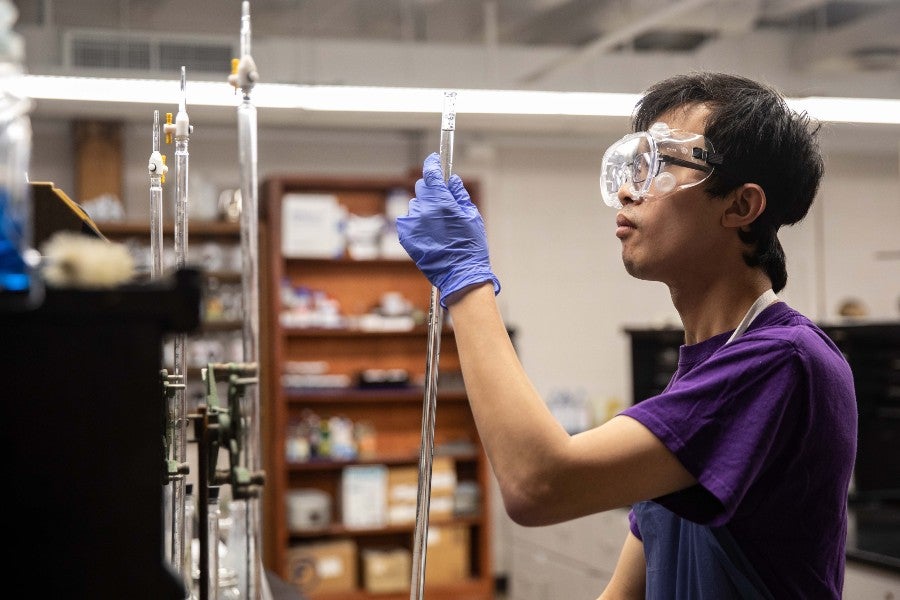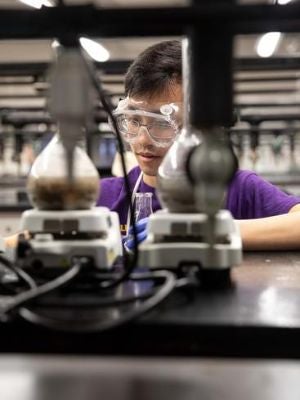Building a firm foundation through chemistry
Reaching beyond the scope of his major, civil engineering junior went to the chemistry lab to learn more about the materials used in his future profession.
Janel Shoun-Smith |

Aaron Hardy, junior civil engineering major from Parkersburg, West Virginia, learned a lot about building a firm foundation for structures in his civil engineering materials class, but after a class contest to design a new formula for concrete to make it as strong as possible, he developed a curiosity about what science “grounded” the building codes and best practices for civil engineers.
He was curious to see if he could expand on the current guidance for what materials can mix with cement but keep the strength of the concrete.
“In engineering we are setting the limits of what we can do according to the design code, so I wondered how those limits in the building code were set in the first place,” said Hardy.
As a former intern for the Nebraska Department of Transportation, Hardy knew that a common way to test the strength of cement is to stack up blocks of concrete and measure when their strength begins to degrade, he said. But Hardy wanted to see what was going on at the chemical level. He hadn’t been interested in chemistry in high school, but after seeing how the field related directly to his chosen profession of civil engineering, chemistry made more sense to him, he said.
Dr. Todd Lynn, chair of civil engineering, facilitated a team up with Cavitt to test how the chemicals in three different materials–fly ash, blast furnace slag and fumed silica–react with calcium hydroxide, a byproduct of Portland cement, to create calcium silicate hydrate.

With a doctorate in polymer science and engineering himself, Dr. Brian Cavitt, professor of chemistry, was all too happy to help. “In our current society, science has to be multidisciplinary to advance,” he said. “Using chemistry to answer an engineering question was just natural.”
Hardy chose the three materials, in part, because they are more environmentally sustainable as they are waste by-products and would be more economical than what is used now. Also, the three materials, termed pozzolans, strengthen Portland cement when added in an appropriate amount. How much hydroxide is present after mixing the materials is reflective of how strong the concrete mixture is; more calcium hydroxide indicates a weaker concrete.
“I’m always asking, how can we make this research as usable as possible and as applicable to people in the professional world as possible,” said Hardy.
At the Student Scholars Symposium, Hardy will present his final results indicating that calcium hydroxide production limits the amount of pozzolan that can replace Portland cement, but civil engineers can use an acid-base titration to determine the optimum amount of replacement pozzolan regardless of the type of pozzolan.
“We can now optimize the use of specific, regional pozzolans in Portland cement to make a better, sustainable building material,” said Cavitt.